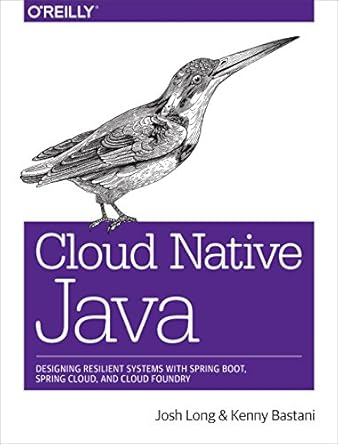White Paper: Cloud-Native Java Development
Introduction
Cloud-native development has emerged as a transformative approach to building modern applications that leverage the scalability, flexibility, and cost-effectiveness of cloud platforms. Java, a versatile programming language, is well-suited for developing cloud-native applications. This white paper explores the key principles and practices of cloud-native Java development, along with the benefits and challenges involved.
Understanding Cloud-Native Applications
Cloud-native applications are designed to be deployed and managed in cloud environments, taking advantage of cloud-specific features and benefits. They typically exhibit the following characteristics:
-
Microservices Architecture: Breaking down applications into small, independent services that can be developed, deployed, and scaled independently.
-
Containerization: Packaging applications and their dependencies into containers, such as Docker images, for portability and consistency.
-
Continuous Delivery: Automating the software delivery pipeline to enable frequent and reliable releases.
-
API-First Approach: Designing applications around APIs to facilitate integration and reuse.
Leveraging Java for Cloud-Native Development
Java offers a rich ecosystem of tools and frameworks that make it well-suited for cloud-native development. Key technologies and practices include:
-
Spring Boot: A popular framework for building microservices and web applications.
-
Spring Cloud: A suite of tools for building distributed systems and microservices architectures.
-
Spring Cloud Kubernetes: A platform for deploying Spring Boot applications to Kubernetes clusters.
-
Reactive Programming: Using frameworks like Spring WebFlux to build non-blocking, scalable applications.
-
Containerization: Packaging Java applications as Docker images for portability and consistency.
-
Continuous Integration and Continuous Delivery (CI/CD): Implementing CI/CD pipelines to automate the build, test, and deployment process.
Benefits of Cloud-Native Java Development
-
Scalability: Cloud-native applications can be easily scaled to meet changing demand.
-
Resilience: Cloud-native architectures are designed to be fault-tolerant and resilient to failures.
-
Cost-Efficiency: Cloud-native applications can be optimized for cost-effectiveness by leveraging cloud-based resources as needed.
-
Innovation: Cloud-native development enables organizations to experiment and innovate rapidly.
Challenges and Considerations
-
Complexity: Designing and managing cloud-native applications can be complex, requiring specialized skills and knowledge.
-
Security: Ensuring security in cloud-native environments is critical and requires careful consideration.
-
Cultural Shift: Adopting a cloud-native mindset may require a cultural shift within the organization.
Best Practices for Cloud-Native Java Development
-
Start Small: Begin with a small, isolated project to gradually introduce cloud-native practices.
-
Choose the Right Tools: Select tools that align with your team's needs and preferences.
-
Focus on Automation: Automate as many processes as possible to reduce manual effort and errors.
-
Monitor and Optimize: Continuously monitor and analyze your cloud-native applications to identify areas for improvement.
-
Foster a Culture of Learning and Experimentation: Encourage a culture of experimentation and continuous learning to stay ahead of the curve.
Conclusion
Java is a powerful language for building cloud-native applications. By leveraging the right tools and practices, organizations can harness the benefits of cloud-native development, including scalability, resilience, and cost-effectiveness.
References
Note: These are general references that can be used for a white paper on cloud-native Java development. You may need to replace the placeholders with specific citations based on the sources you've used.
Books
-
Cristián Tirabassi. Spring Boot: A Beginner's Guide. Packt Publishing, 2021.
-
Raffi Krikorian. The Cloud Native Journey: From Monolith to Microservices. O'Reilly Media, 2019.
Articles and Papers
-
Spring.io. Spring Boot Documentation. https://spring.io/projects/spring-boot
-
CNCF (Cloud Native Computing Foundation). What is Cloud Native?* [invalid URL removed]
-
DZone. Cloud-Native Development with Java: A Comprehensive Guide. [invalid URL removed]
Online Resources
-
Spring Guides. Spring Boot Guides. https://spring.io/guides/gs/spring-boot/
-
Spring Tips. Spring Tips Blog. [invalid URL removed]
Additional Tips:
-
Cite specific sections or pages where you've referenced information from the sources.
-
Use a consistent citation style (e.g., APA, MLA, Chicago) throughout your paper.
-
Verify the credibility of your sources to ensure their accuracy and relevance.
-
Consider adding more recent publications if available to reflect current trends and advancements in cloud-native development and Java.
By following these guidelines, you can create a well-referenced and informative white paper on cloud-native Java development. Contact ias-research.com for details.



